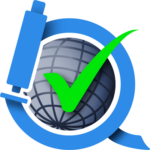Working Group 1
Quality Assessment and Reproducibility for Instruments & Images in Light Microscopy
The Consortium for Quality Assessment and Reproducibility for Instruments and Images in Light Microscopy (QUAREP-LiMi), formed by the global community of practitioners, researchers, developers, service providers, funders, publishers, policy makers and industry related to the use of light microscopy, is committed to democratizing access to quantitative and reproducible light microscopy and the data generated by it.
Our mission is to provide a comprehensive set of community-agreed guidelines, protocols, automation procedures and other resources aimed at improving quality control, quality assurance, and instrument/method calibration. The stakeholders advocate for the use of the highest level of reproducibility for data generated by light microscopy methods in scientific research and biotechnology applications. In support of achieving its mission, QUAREP-LiMi:
-
sanctions Working Groups to form teams that focus on specific technical or outreach topics;
-
maintains, disseminates, and teaches best practices, protocols, and software tools; and
-
collaborates with providers of reference materials or instrumentation or other tools that enable the easy implementation of best practices at the community level.
We came together in our first online Web meeting on the 28th of April, 2020, with about 50 attendees. By now (24st of April 2024), the network has grown to 620 people from 41 countries worldwide. We have members from academia (research labs, core facilities), national microscopy communities, companies involved in the microscopy business, organizations or institutions related to standardization on a national or international level, and scientific publishers and observers from funding agencies (see the graph below and on the member page for an overview).
Ten working groups (WGs) were established in the 2nd General Meeting on the 9th of July 2020 to bring our common aims quickly forward. Our web page gives an overview of QUAREP-LiMi’s work. In the 3rd General Meeting, WG 11 “Microscopy Publication Standards” and later WGs 12 “Image Visualization and Analysis” and 13 “Phototoxicity” were established. WG 14 “Environment” and 15 “FLIM” are in the process of being established, and WG 8 is restructured to work on “Education, Training and Outreach”.
QUAREP-LiMi operates a NextCloud and an OMERO server, serving as a centralized repository and exchange point for our collective work. These platforms facilitate collaboration and data sharing among our members.
QUAREP-LiMi is absolutely open to new members, and we are looking forward to your contribution. If you are interested in joining our initiative, please fill out our membership form. Use our form for changing your working group (WG) or joining a new WG. For any further questions, please contact us.
Working Group 2

30th meeting, 8th of May 2023
Meeting date
Meeting summary
1) First we discussed some general QUAREP-LiMi news:
– report from the WG9 & co-chairs meeting on May 2nd (feedback from general meeting, QUAREP-LiMi Organigram)
2) Second we talked about the preparation of our contribution for ELMI 2023:
– presenters, preparation support team members, dates for preparation meetings, abstract was sent, date for the actual workshop, which setups will be available
3) Third, we review the annual meeting:
– intro session: needs to be improved, idea from WG9: have meeting schemes (Spring: external & outreach, Fall: internal – update about work group progress
– our break out room: comments to follow up (advice about when a detector is OK / not OK; make protocol available)
– main panel (great) & general feedback (general goal of QUAREP needs to be made more clear)
– our survey (short look at the results, need to be looked at closer later)
4) Mathias reported from his EMVA1288 training (will optimize and upload the slides):
– report followed by discussion about how to use the material, how to adapt it to our LiMi needs, we always use EMVA1288 as guidance
5) Last we postponed David’s report again, to the June meeting and agreed on the next steps.
Working Group 3
Working Group 4
Working Group 5
Working Group 6
Working Group 7
Working Group 8
Working Group 9
Working Group 10
Working Group 11

